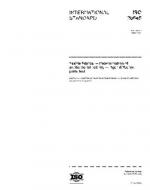|
This section contains 389 words (approx. 2 pages at 300 words per page) |
Agar diffusion refers to the movement of molecules through the matrix that is formed by the gelling of agar. When performed under controlled conditions, the degree of the molecule's movement can be related to the concentration of the molecule. This phenomenon forms the basis of the agar diffusion assay that is used to determine the susceptibility or resistance of a bacterial strain to an antibacterial agent, (e.g., including antibiotics.
When the seaweed extract known as agar is allowed to harden, the resulting material is not impermeable. Rather, there are spaces present between the myriad of strands of agar that comprise the hardened polymer. Small molecules such as antibiotics are able to diffuse through the agar.
Typically, an antibiotic is applied to a well that is cut into the agar. Thus, the antibiotic will tend to move from this region of high concentration to the surrounding regions of lower antibiotic concentration. If more material is present in the well, then the zone of diffusion can be larger.
This diffusion was the basis of the agar diffusion assay devised in 1944. A bacterial suspension is spread onto the surface of the agar. Then, antibiotic is applied to a number of wells in the plate. There can be different concentrations of a single antibiotic or a number of different antibiotics present. Following a time to allow for growth of the bacteria then agar is examined. If bacterial growth is right up to the antibiotic containing well, then the bacterial strain is deemed to be resistant to the antibiotic. If there is a clearing around the antibiotic well, then the bacteria have been adversely affected by the antibiotic. The size of the inhibition zone can be measured and related to standards, in order to determine whether the bacterial strain is sensitive to the antibiotic.
This technique can also be done by placing disks of an absorbent material that have been soaked with the antibiotic of interest directly onto the agar surface. The antibiotic will subsequently diffuse out of the disk into the agar. This version of agar diffusion is known as the Kirby-Bauer disk-diffusion assay.
The agar diffusion assay allows bacteria to be screened in a routine, economical and easy way for the detection of resistance. More detailed analysis to ascertain the nature of the resistance can then follow.
|
This section contains 389 words (approx. 2 pages at 300 words per page) |


